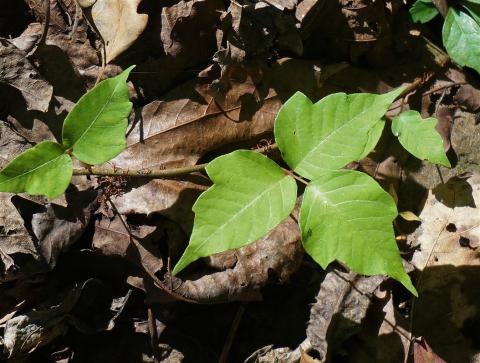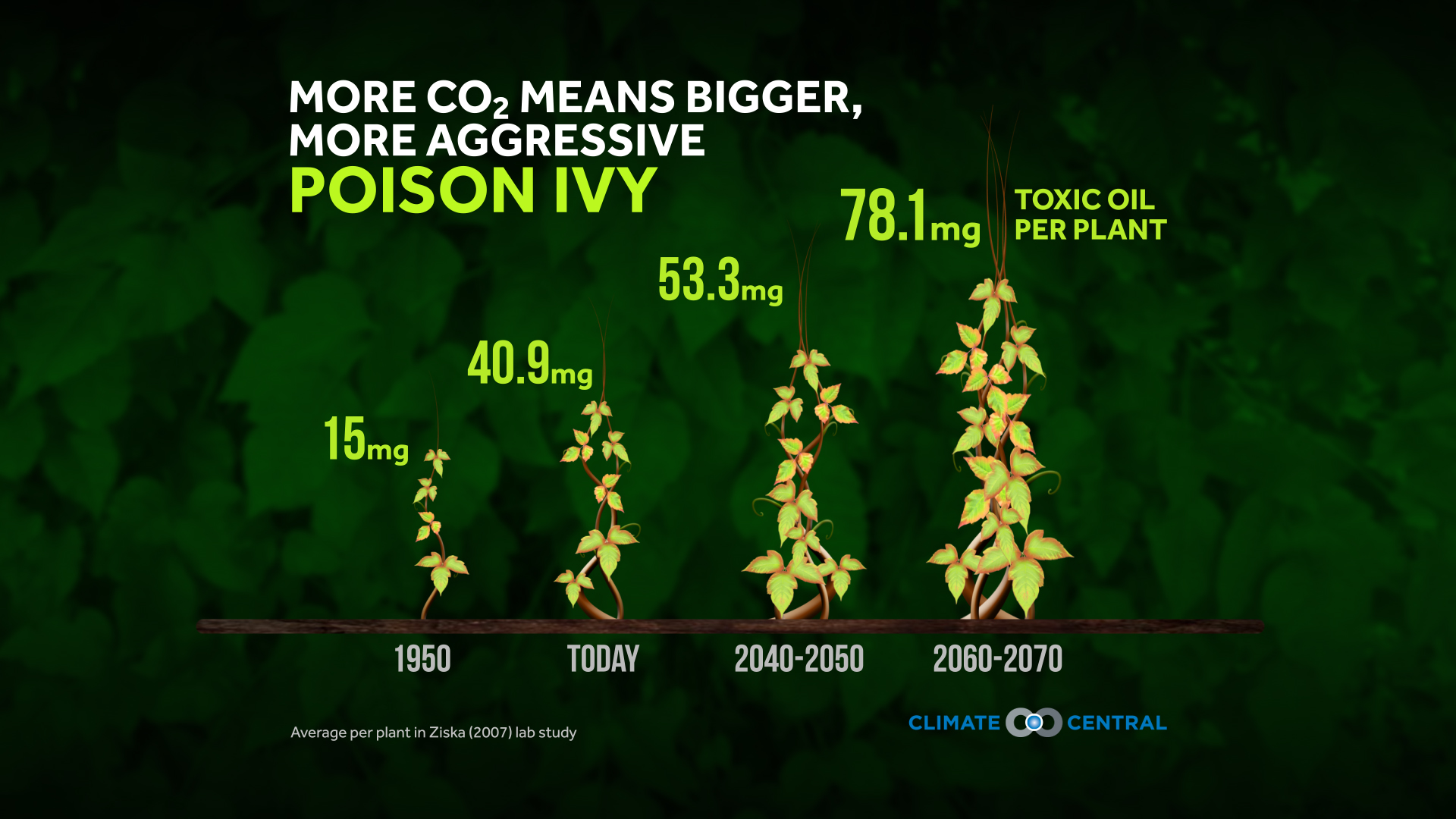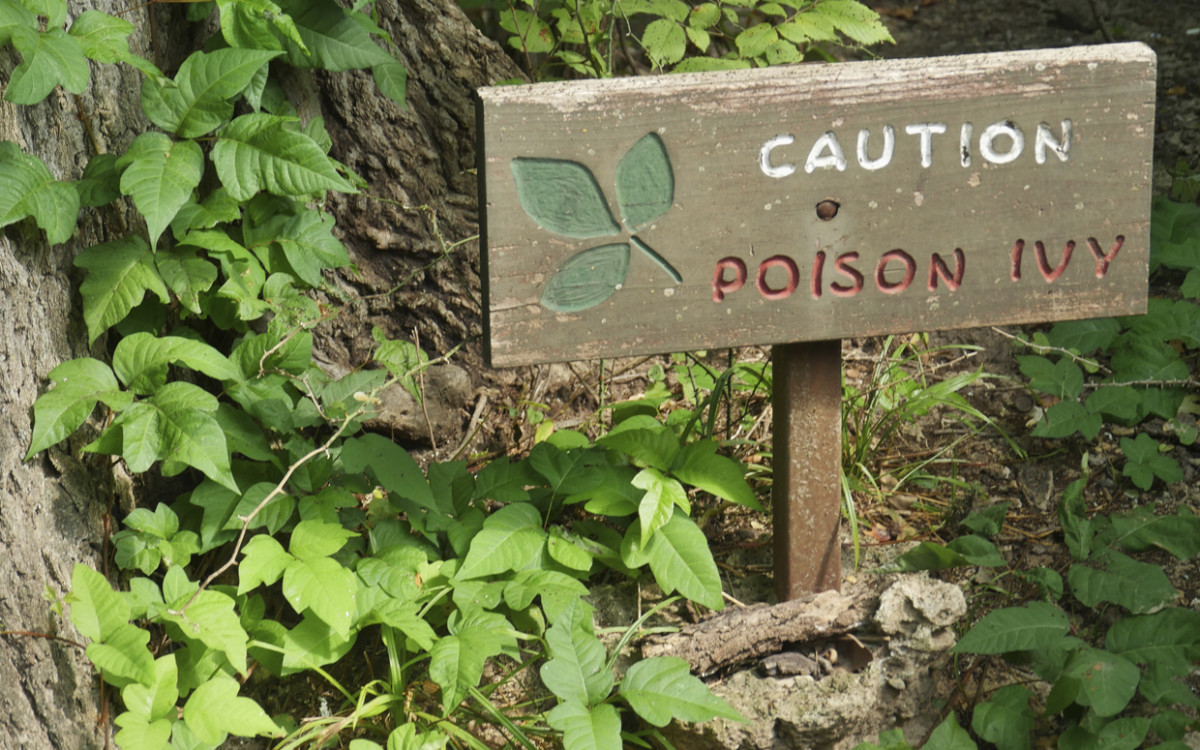Have you ever wondered how Poison Ivy Reflects climate change?
With environmental change moving at lightning speed, every leaf and vine tells its own tale about our world today.Have you ever wondered how Poison Ivy Reflects climate change? One plant that stands out – and has caused untold harm – is poison ivy – once known only from wooded areas but now spreading across landscapes at alarming speed, serving as an emblematic green marker of climate change’s effects on plant life as well as human health issues. Come join us as we uncover this complex relationship between this resilient vine and global warming while uncovering what gardeners, enthusiasts and ecologists can do about it all together!
Poison Ivy Reflects Climate Change: Itchy Evidence of a Warming World
As an environmental science student, I spend a lot of time outdoors, whether it’s collecting data in the field or simply enjoying nature. Lately, though, those outdoor excursions have come with an unwelcome surprise: a surge in poison ivy encounters. And it turns out, my itchy misery might be a symptom of something much bigger – climate change.
Here’s the poison ivy connection: warmer temperatures and increased carbon dioxide levels in the atmosphere are creating ideal growing conditions for this infamous plant. Studies have shown that poison ivy thrives in hot, humid environments, and with our planet’s rising temperatures, it’s finding more and more real estate to call home.

This isn’t just an annoyance for hikers and gardeners. Poison ivy Reflects Climate can actually disrupt ecosystems. Its aggressive growth can crowd out native plants, and its potent allergens can deter wildlife from using certain areas. This can have cascading effects on the entire ecological balance.
The issue is compounded by the fact that poison ivy seems to be getting itchier. Research suggests that higher CO2 levels increase the production of urushiol, the oil in poison ivy that triggers that terrible allergic reaction. So, not only are we seeing more poison ivy, but it also packs a stronger punch.
So, what can we do? As an environmental science student, I’m focused on solutions. We need to prioritize climate change mitigation strategies to curb rising temperatures and CO2 levels. This means advocating for sustainable practices, reducing our reliance on fossil fuels, and investing in renewable energy sources.
Individually, we can be mindful about managing poison ivy populations. Learning to identify the plant and taking steps to avoid contact is crucial. There are also some natural and chemical control methods available, but it’s important to use them responsibly to avoid harming other plants and wildlife.
The next time you find yourself battling a poison ivy Reflects Climate rash, remember – it might be more than just an itchy annoyance. It could be a sign of our changing climate. By understanding this connection and taking action, we can protect both our skin and our planet.
Let me explain. Climate change is causing a rise in atmospheric carbon dioxide (CO2). This might sound bad for plants in general, but poison ivy thrives on it. Studies have shown that increased CO2 levels lead to poison ivy reflects climate by growing bigger, faster, and producing more urushiol – the oil that triggers that awful itchy rash. Essentially, poison ivy is getting a growth boost thanks to a changing climate.
But wait, there’s more! Poison ivy reflects climate not just in its growth, but also in its range. Warmer temperatures mean poison ivy can expand its territory further north. This means more people are at risk of encountering the plant, and with its increased potency, the consequences of a brush with poison ivy are becoming even more unpleasant.
The impact of poison ivy reflects climate goes beyond just itchy skin. A more vigorous and widespread poison ivy disrupts ecosystems. It can outcompete native plants, reducing biodiversity. This creates a domino effect, impacting everything from insects to animals that rely on those native plants for food and habitat.

So, the next time you see a patch of poison ivy, remember – it’s not just a plant. It’s a living indicator of the changing climate around us. Poison ivy reflects climate in a way that’s uncomfortable and undeniable. By studying how poison ivy responds to a warming world, we can gain valuable insights into the broader impacts of climate change on our ecosystems.
And, of course, the most important takeaway for me (and maybe you too) is to be extra vigilant when exploring the outdoors. Poison ivy reflects climate , and that means we need to be even more climate-conscious to avoid the itch!
Unfortunately, the story of poison ivy reflects climate doesn’t end there. The increased CO2 levels not only make poison ivy grow more, but they might also make the urushiol it produces more potent. This means even a small brush with the plant can trigger a more severe allergic reaction. Imagine a world where a simple hike turns into weeks of miserable itching – that’s the potential future poison ivy reflects climate .
The research on poison ivy reflects climate is ongoing, but one thing is clear: this isn’t just an environmental issue, it’s a public health concern. As poison ivy spreads and intensifies, more people will likely experience the discomfort and even pain of an allergic reaction. This highlights the need for increased awareness about climate change and its cascading effects, even the itchy ones.
So, the next time you’re learning about climate change, remember to include poison ivy reflects climate in your conversation. It might seem like a strange example, but it’s a relatable and undeniable consequence of a warming world. By understanding how even a common plant like poison ivy responds to climate change, we can be better prepared to address the larger challenges facing our planet. And, who knows, maybe this knowledge will even help you avoid that itchy encounter next time you’re outdoors!
The Evolution of Poison Ivy Reflects Climate in a Changing World
“Leave them be!” This mantra holds wisdom in bioevolutionary terms. Toxicodendron radicans poison ivy has endured over centuries by its glossy allure and ability to adapt; yet its resilience remains key for its proliferation across woodlands and riverbanks in eastern and central North America, finding new homes among disturbed habitats while flourishing under changing climate boundaries. It has proven an indestructible force..
Poison Ivy’s Dance Through Time
Poison Ivy once limited itself to certain areas; however, its adaptability for living in different habitats from dry outcrops to shaded forest floors allowed for its widespread spread across our planet. Poison ivy thrives under changing light and temperatures as humans alter our planet surface more drastically than before.
Adaptable Allergy: A Scientific Approach for Thriving Under Change
Carbon dioxide, the greenhouse gas symbolic of climate change, is no opponent to poison ivy; rather it serves as its growth promoter. Studies have revealed that increased CO2 levels lead to larger and more powerful quantities of urushiol oil found in poison ivy sap responsible for producing its distinctive rash symptoms.
Poison Ivy and Health: Taking an Unwise Stand on Climate Change
Poison Ivy can have devastating results for humans; one encounter may bring days of intense itching and rash; but what happens if its leaves keep intensifying its power to cause more scratched areas?
Breaking Out in More Breakouts
American Academy of Dermatology reports a marked upsurge in poison ivy cases over recent years, as outbreaks become both severe and widespread. Weather patterns that include increased CO2 emissions and longer growth seasons appear to be driving this trend forward, making poison ivy both an irritation and public health threat.
The Urushiol Effect Under a Greenhouse World
Due to higher carbon levels lingering in the atmosphere, poison ivy’s urushiol concentration may spike and increase allergic reactions in those exposed. Even casual interactions such as going for an informal stroll through a park during COVID can demonstrate its greater potency.
Gardening in the Age of Climate Change
Gardening has always been both art and science; however, climate change is intensifying this delicate balance to an extreme. Everything we choose – plants we select or practices used – are now at risk from an ever-shifting planet.
The Tangled Garden: Poison Ivy and Plant Choices
Gardeners today must account for changing climate patterns when making gardening choices, with drought-tolerant plants becoming more desirable and once-maligned poison ivy now proving an appealing low maintenance choice that even ecologically conscious gardeners cannot resist.
Navigating the Greenhouse Garden
Adapting to an ever-evolving climate demands both an awareness and willingness of new strategies. As plant hardiness zones shift with each season change, gardeners must keep pace to maintain vibrant yet sustainable landscapes.
The Poison Ivy Paradox: Environmental Implications
Poison Ivy has far reaching consequences that extend far beyond local parks or backyards; its environmental ramifications also threaten our entire eco system, creating ripple effects through its networked network.
The Not-So-Innocuous Understory Invader
Poison Ivy can have far reaching impacts that extend far beyond local parks or backyards; its environmental ramifications threaten our entire eco system with ripple effects through its vast network.
Our Role as Gardeners in the Greater Web
Gardeners and environmental stewards play an essential role in combatting poison ivy’s spread through native plant cultivation, responsible landscape design practices or keeping a sharp eye out for local vegetation health – individual actions can have profound ripple effects across an ecosystem.
Cultivating Change: Strategies for Poison Ivy Management
Recognizing that climate change and poison ivy are inextricably linked provides us with new insight for management decisions. How can we balance our landscape needs against an ever-evolving world?
The Gardener’s Arsenal Against Poison Ivy
Gardeners have various tools at their disposal for combatting poison ivy in their gardens, from mechanical measures such as pulling and mowing to applying herbicides strategically for effective management – pulling, mowing, harvesting for seed production are among many others – to employ sustainable approaches in fighting poison ivy effectively. Knowledge about its lifecycle and mechanics of spread can inform more sustainable approaches for managing it more sustainably..
The Strategic Greening of Public Spaces
Landscape architects and city planners are taking proactive steps against poison ivy by including management strategies into public area designs, such as planting species that naturally deter its spread or maintaining landscapes that limit its growth. This may involve selecting plant varieties known to repel poison ivy growth.
A Final Call to Action Among the Leaves
Poison Ivy and Climate Change Are Inextricably Bound Together” Intimating this relationship are its various intertwines between human activities and natural world environments – one we are still unravelling step-by-step.
Staying Engaged with Ecology
Environmental change can be unpredictable and unnerved people, which makes staying informed the key step toward taking meaningful actions to protect it. Engaging with nature through citizen science initiatives or simply paying more attention can provide us with plenty of ways to connect with its systems we depend upon for survival.
The Poison Ivy Reflects Climate of Our Time
Poison Ivy serves as a sobering reminder that our decisions as environmental stewards have far-reaching impacts, such as contributing to climate change. By taking intentional steps in our gardens, community spaces, and everyday lives we can reduce its spread and other plant species affected by it.
In Defense of Green Futures
The fight against poison ivy is neither won nor lost; rather it’s ongoing and collective; an embodiment of environmental degradation as we struggle together towards cultivating greener futures for ourselves and for future generations to enjoy. By working towards cultivating these visions for sustainable living together we can make sure the vines we foster continue to show signs of life in an ever-evolving environment.

Frequently Asked Questions (FAQ)
What makes poison ivy more potent in today’s environment?
The increase in atmospheric CO2 levels has been directly linked to a rise in urushiol concentrations within poison ivy plants, making them more potent and likely to cause severe allergic reactions. Additionally, changes in climate and extended growing seasons contribute to its proliferation.
How can gardeners manage poison ivy effectively?
Effective management strategies include mechanical removal, like pulling or mowing, and the careful use of herbicides. It’s crucial to understand the plant’s lifecycle for sustainable control. Gardeners can also employ strategic landscaping to minimize poison ivy’s presence by choosing plant species that naturally repel it and maintaining the landscape in ways that discourage its growth.
Can changes in gardening practices really impact the spread of poison ivy?
Yes, individual gardening practices can significantly impact local ecosystems. By choosing native plants and designing with biodiversity in mind, gardeners can support a balanced ecosystem that resists the spread of invasive species like poison ivy. Over time, these individual efforts contribute to larger ecosystem health and resilience.
What role do landscapers and city planners have in addressing the spread of poison ivy?
Landscapers and city planners play a pivotal role by integrating poison ivy management strategies into public space design. This can include selecting poison ivy-resistant plant species and employing landscaping techniques that discourage its proliferation, thereby protecting public health and community ecosystems.
How can individuals stay informed and engaged with changes in the environment, particularly with poison ivy and climate change?
Staying informed involves a commitment to learning about and observing local ecosystems, participating in citizen science initiatives, and engaging in environmental education opportunities. This continuous learning process empowers individuals to make informed decisions and take responsible actions in their communities and beyond.
What is the greater significance of combating the spread of poison ivy in the context of climate change?
Combating the spread of poison ivy goes beyond immediate public health concerns to touch on broader issues of biodiversity loss and ecosystem imbalance. Through concerted effort and sustainable practices, individuals and communities can mitigate the adverse effects of climate change, preserve biodiversity, and promote healthier, more resilient ecosystems.

Is it possible to completely eradicate poison ivy reflects climate?
Complete eradication of poison ivy is unlikely and may not be ecologically desirable as it plays a role in certain ecosystems. The goal is instead to manage its spread and minimize harmful interactions, balancing human needs with ecological health. Sustainable management and informed community action are key to achieving this balance.

For Reading Best Books on Climate Check this out : Top 5 Must-Read Climate Change Books of the Year (You Must Should Read 2024)!
Q: Why do people keep saying “poison ivy reflects climate change?”
A: This statement highlights how rising CO2 levels and temperature changes associated with climate change are impacting the growth and spread of poison ivy.
Q: How exactly does poison ivy reflects climate change?
- Increased Growth: Poison ivy thrives on higher CO2 concentrations in the atmosphere. Studies show these levels lead to poison ivy growing bigger, faster, and producing more leaves.
- Expanded Range: Warmer temperatures allow poison ivy to expand its territory further north, increasing the areas where people encounter it.
- Potency Boost: CO2 increases may also make the urushiol oil in poison ivy more potent, leading to more severe allergic reactions.
Q: Why is this a concern?
- Public Health: More widespread and vigorous poison ivy poses a greater public health risk, with more people experiencing allergic reactions.
- Ecosystem Disruption: A more aggressive poison ivy can outcompete native plants, reducing biodiversity and impacting the entire ecosystem.
Q: What can we learn from “poison ivy reflects climate change?”
- Climate Change Indicator: Poison ivy’s response to climate change serves as a tangible example of the broader environmental impacts we’re facing.
- Importance of Awareness: Understanding how even a common plant reacts to climate change highlights the need for increased awareness about this crucial issue.
Q: Besides itchy skin, what other consequences could there be?
Beyond the discomfort, a more vigorous and widespread poison ivy could lead to:
- Increased healthcare costs associated with treating allergic reactions.
- Changes in outdoor recreation habits due to fear of encountering poison ivy.
- Disruption of natural landscapes and ecological processes.
Is there anything I can do to avoid “poison ivy reflecting climate change? (poison ivy reflects climate)”
A: While we can’t directly control poison ivy’s response to climate change, there are steps you can take to minimize your own itchy encounters:
- Learn to Identify: Familiarize yourself with the appearance of poison ivy (leaves of three, let it be!). There are many resources online and in field guides to help you distinguish it from harmless look-alikes.
- Practice Prevention: When venturing outdoors, wear long sleeves, pants, and closed-toe shoes. Consider using a barrier cream on exposed skin, especially if you know you’ll be in areas where poison ivy is common.
- Wash Up Immediately: If you suspect you’ve brushed against poison ivy, wash the exposed area thoroughly with soap and cool water within 10 minutes. This can significantly reduce the severity of a reaction.
- Stay Informed: Keep yourself updated on research around “poison ivy reflecting climate change.” This can help you anticipate potential changes in the plant’s distribution and potency.
By understanding how “poison ivy reflects climate change,” we can gain valuable insights and take action to address this critical environmental challenge.
For More Information about poison ivy reflects climate change Check this out: Poison ivy seems to thrive under climate change – NPR (Poison Ivy Reflects Climate change)



